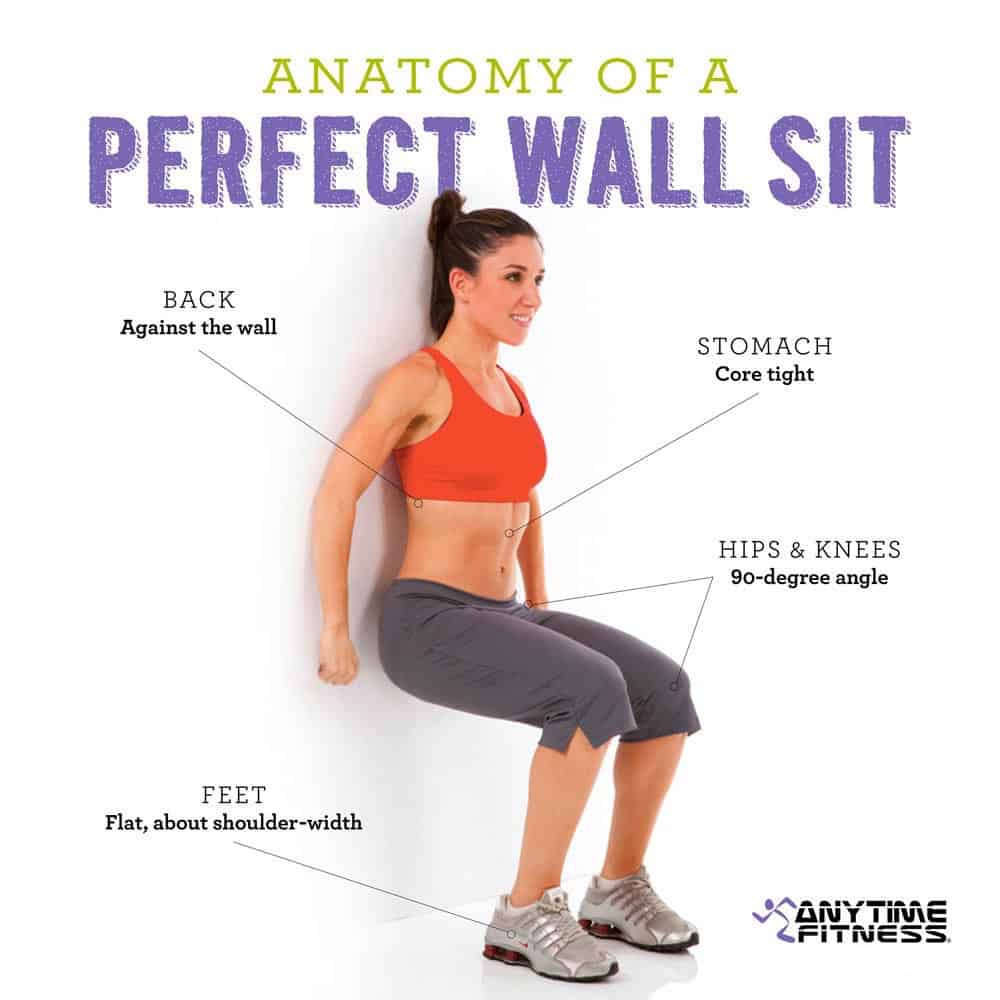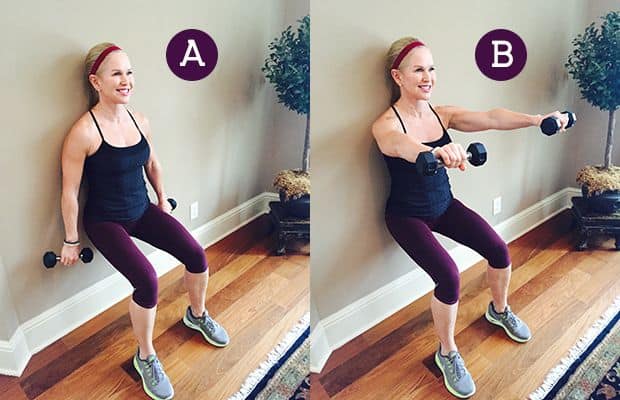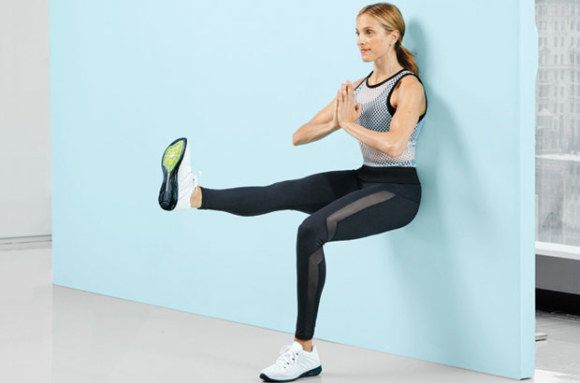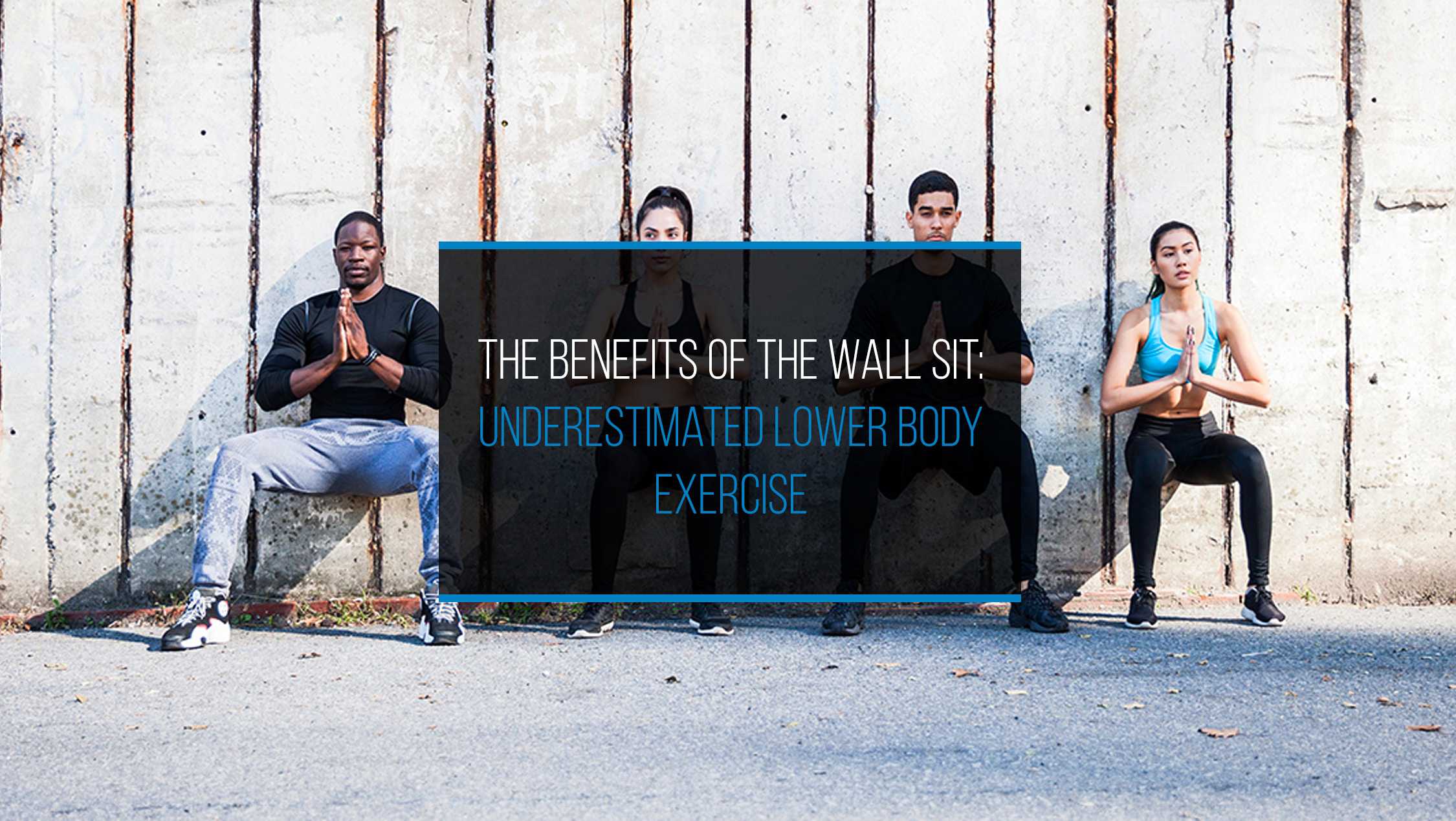The wall sit exercise is excellent for building quadriceps strength, working the muscles in the front of your thighs. This lower body exercise is generally used to build isometric strength and endurance in the quads, glutes, and calves. The wall sit is not a particularly complicated exercise, but many people still do it wrong. To perform a wall, sit properly, form a right (90 degrees) angle at your hips and knees, with your back flat against a wall and your feet on the ground. You should feel a slight pulling sensation in the top of your thighs. The wall sit is a valuable exercise as part of any lower body exercise routine.
Benefits of the Wall Sit
The wall sit exercise isolates the quadriceps muscles. It’s often used to gradually build up leg strength for other activities that put an extensive strain on the lower body, such as skiing, hockey, track and field, and running. In activities like running that rely primarily on hamstring strength, increasing quadriceps strength helps balance out the leg muscles. The wall sit, in particular, builds muscular endurance, delaying fatigue and allowing athletes to perform at their optimum level of performance for long periods. The wall sit should be used in combination with other lower body or quadriceps strengthening exercises if conditioning for sports is your goal.
The quadriceps muscle is used daily for simple activities like getting up from a chair or walking up and down inclines or stairs. Because we use this muscle so frequently, wall sits can also be beneficial for non-athletes to make daily living activities easier.
How to do a Wall Sit: Step-by-Step Guide
Place your back flat against a firm wall with your feet shoulder-width apart. Keep your feet about 2 feet away from the base of the wall. Engage your core muscles as you slide your back down the wall until your thighs are at a right angle from the floor. Make sure to adjust your feet so that your ankles line up directly under your knees. Leaning your knees out over your ankles leads to knee strain. Keep your back flat against the wall, with your legs at 90 degrees, and steady in this position for between 20-60 seconds. You will be able to hold the wall sit longer as your legs become stronger. Now slide up the wall into a standing position. Repeat the wall sit three times with 30 seconds of rest in between. Each time you do the exercise, you should increase your hold time by five seconds until you can hold it for the full minute.
Common Mistakes When Doing the Wall Sit

- Your thighs are not sitting parallel to the floor.
You need to maintain a right angle between your thighs and your back and between your thighs and the floor. You may need to start at 45 degrees until you build up more strength. Do not move your thighs lower than 90 degrees at any point.
- Your knees are extending out past your ankles.
Do not allow your knees to extend past your ankles. They should always be directly above your ankles when doing the wall sit exercise. Not only does sticking your knees out make the exercise uncomfortable, causing excessive strain on your knee ligaments, but it also changes the muscle you’re working. You’ll be using your calves to stay balanced rather than your quadriceps.
- You’re putting your body weight on your toes.
When doing the wall sit, your bodyweight should be on your heels rather than your toes. Make sure you are pushing your heels into the ground, and your feet are sitting flat.
- Finishing by falling instead of standing.
At the end of each repetition of the wall, sit, push your heels into the ground and slide back up the wall. If you collapse to the floor, you risk injuring your knees.
Modifications and Variation of the Traditional Wall Sit
The wall sit exercise can be changed to match your fitness level, either to make it easier until you build up enough strength to do the whole exercise or make it more challenging and get a more strenuous workout.
The wall sit is intense, so play with your position slightly or change the amount of time you hold each repetition. If you can only hold it for 10 seconds, incredible! Start there and increase your hold time gradually. If you’re super-fit and can stay longer than a minute, that’s great too. Adjust the exercise to make it work for you and your goals.
The wall sit can also be done using an exercise ball between your back and the wall. This can be more comfortable for some people.
Decreasing the angle of your legs can make the wall sit less intense if you are just starting. Start with a 45-degree angle at your thighs instead of a 90 degree one. This takes some pressure off your knees, as well. As you get stronger, you can gradually increase your thigh angle until you reach 90 degrees. Remember, don’t increase this angle greater than 90 degrees, as it can put you at risk for an injury.

For athletes or those who want to make the wall sit more challenging, there are also modification options. Try doing the wall sit with a dumbbell in each hand. This not only increases the resistance you have to hold with your lower body but allows you to multi-task by doing upper body exercises at the same time. Bicep curls, lateral raises, and shoulder presses can all be done while in the wall sit. If you’re not up for multi-tasking, simply holding the weight increases the intensity of the exercise.

Single wall sits an option, as well. Using one leg at a time works your balance, works more muscle groups, and, of course, makes the wall sit harder, as you’re only working one leg at a time. To do this, get into a wall sit position and extend one leg in front of you. Alternate which leg you extend, ensuring your thighs stay parallel to the floor with your knees over your ankles.
Safety Precautions
The wall sit places weight on your knees, so it is not a good exercise for people with an existing knee injury. You should always consult your doctor before starting a new exercise routine. Feeling a burning sensation in your quadriceps while doing the wall sit is expected. If you have pain in your knees or your kneecap, you should stop doing the exercise.

